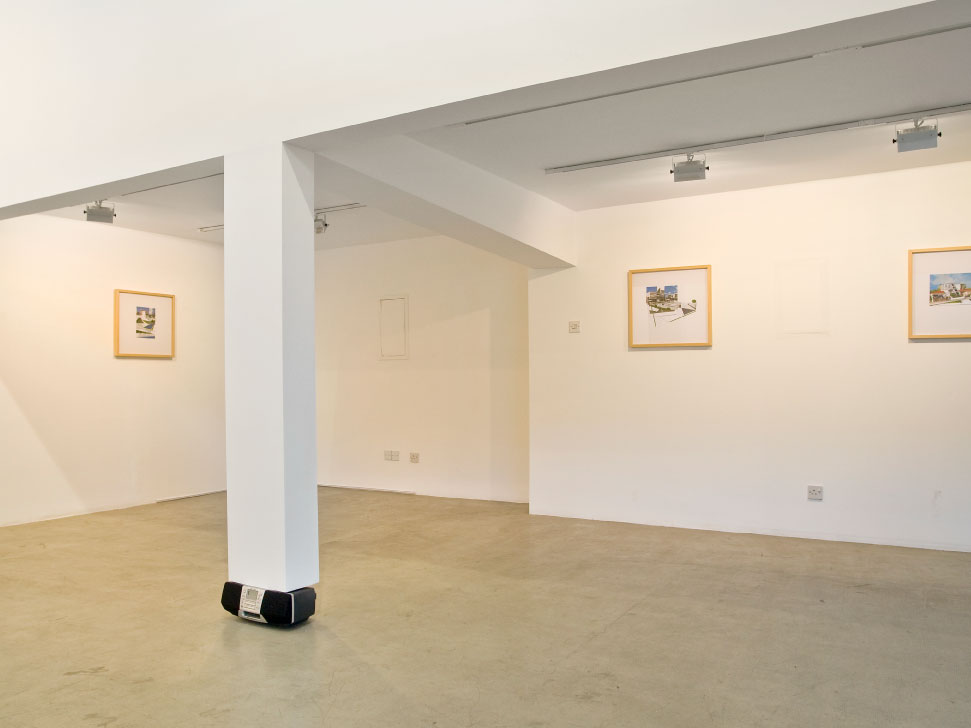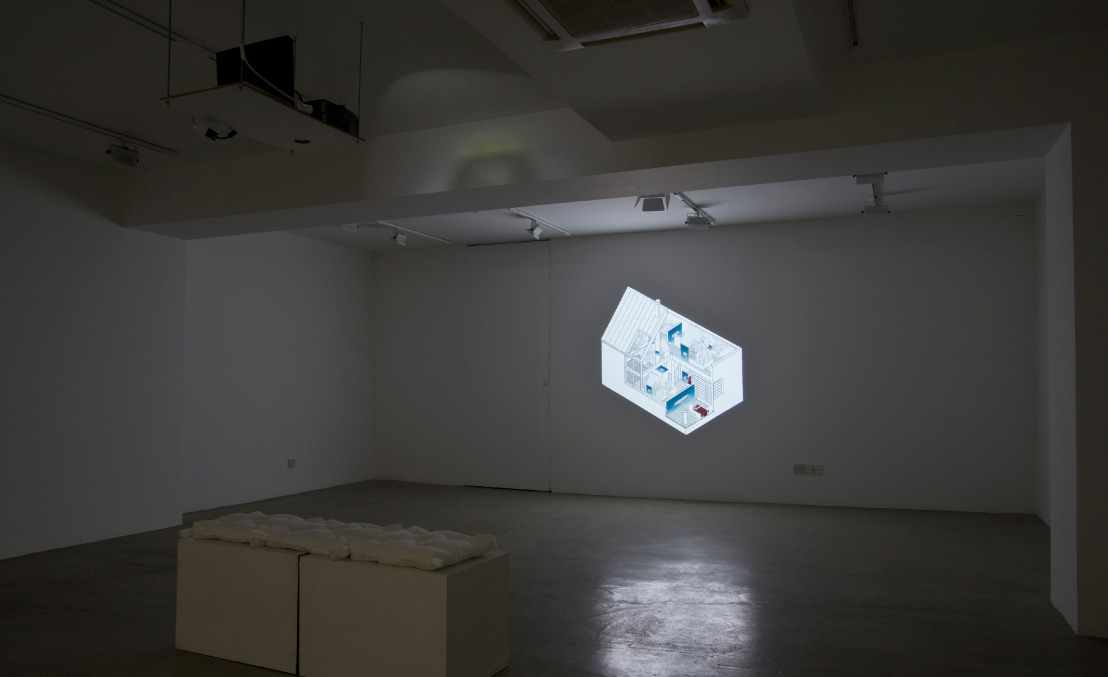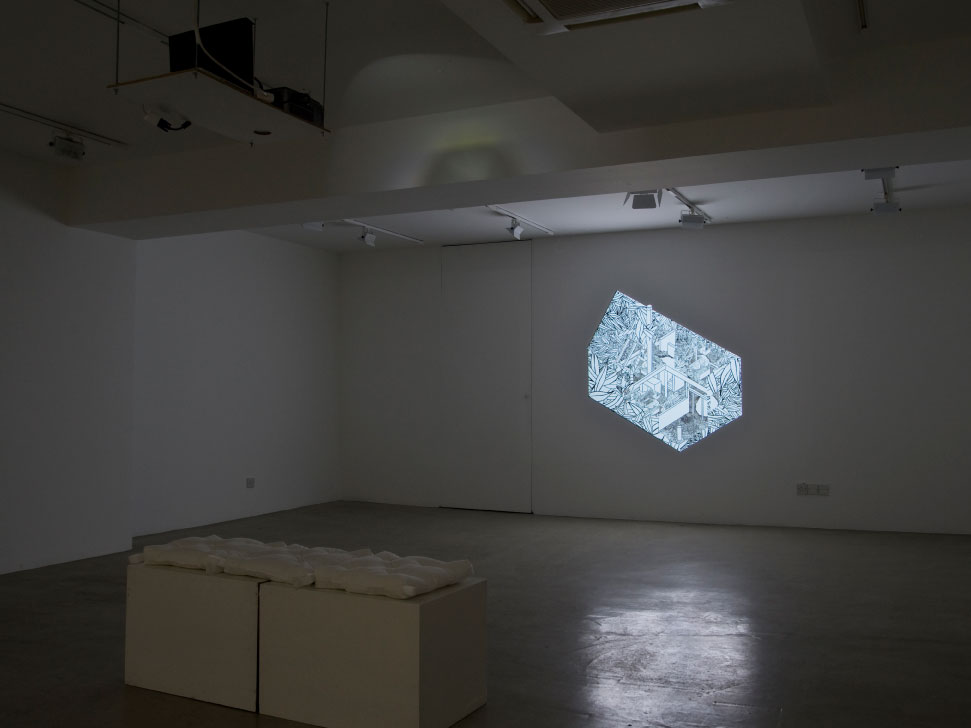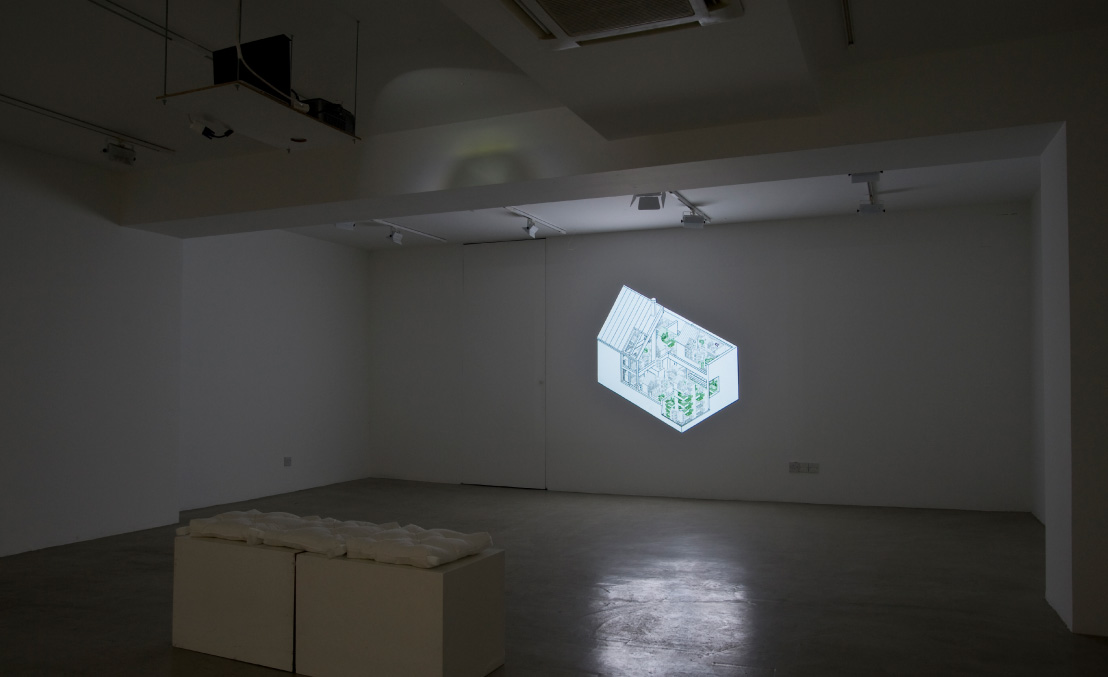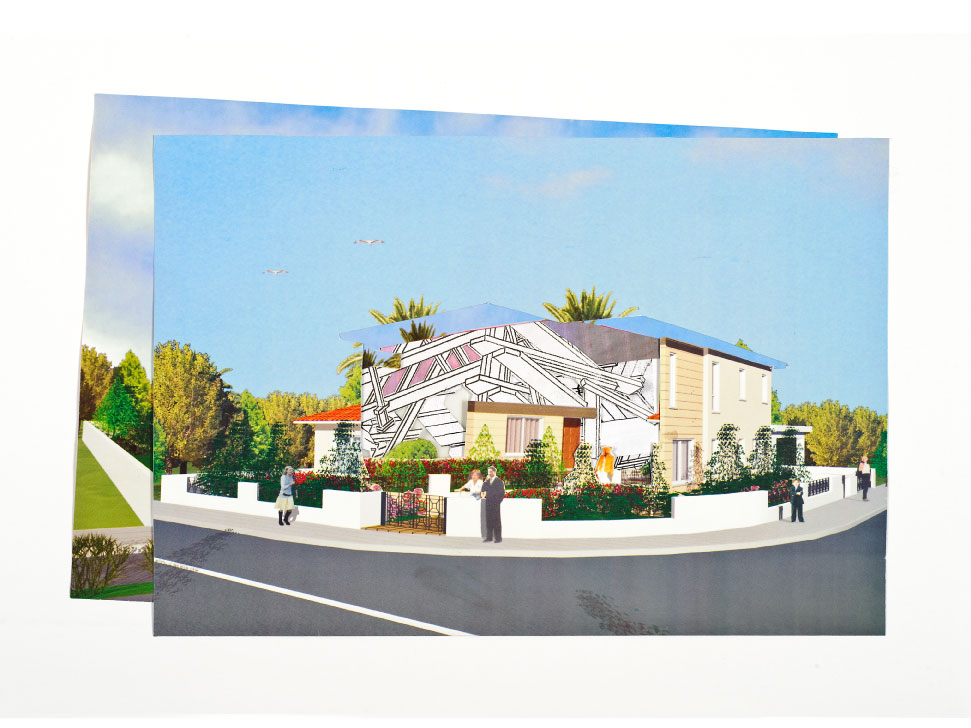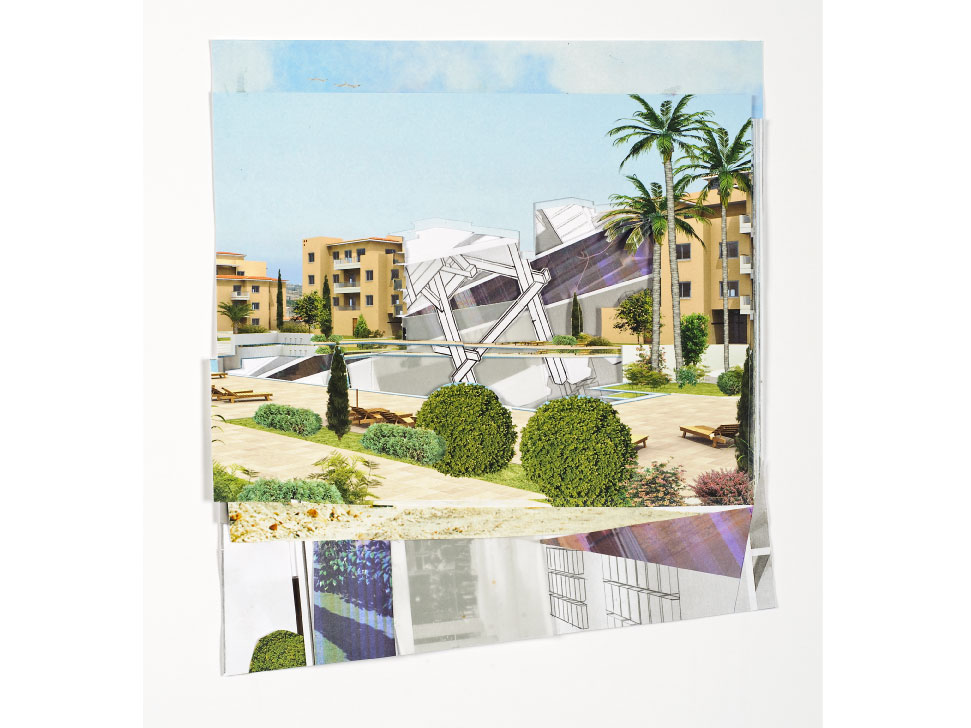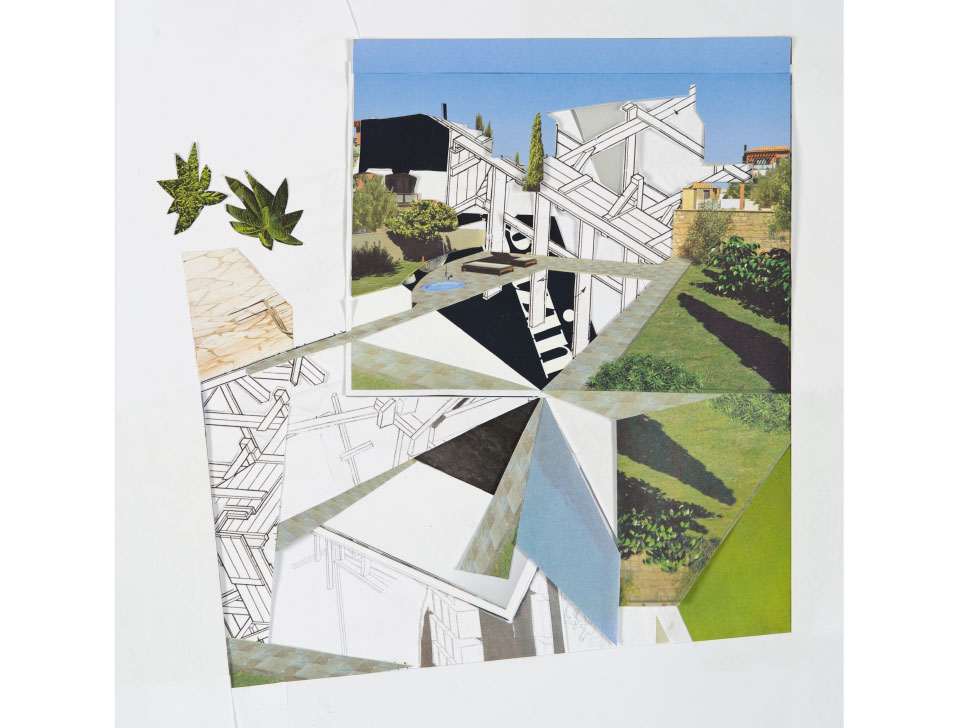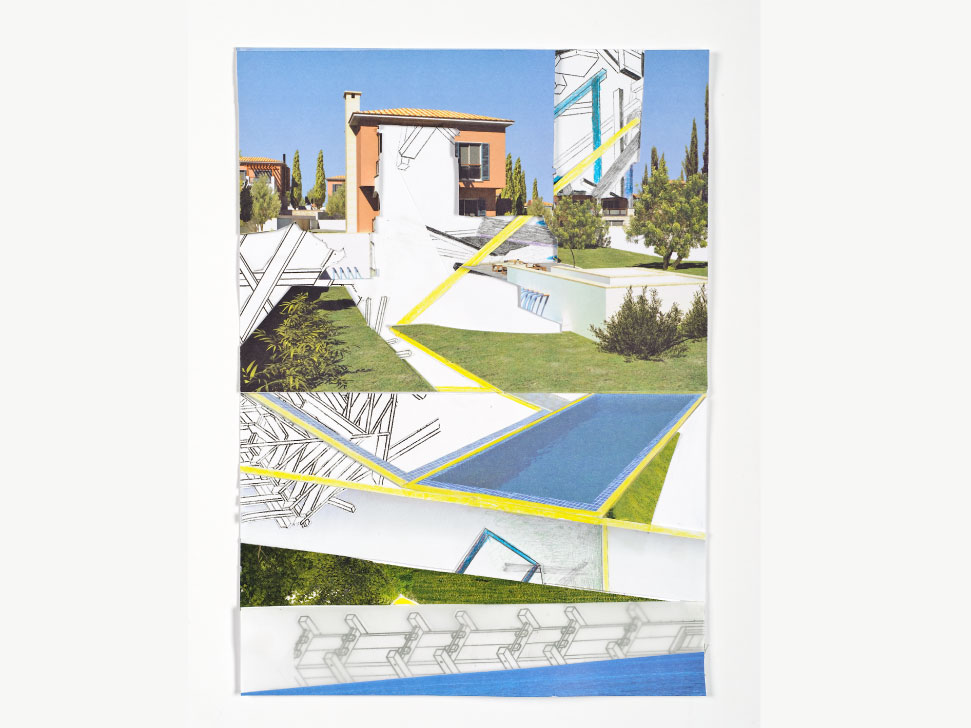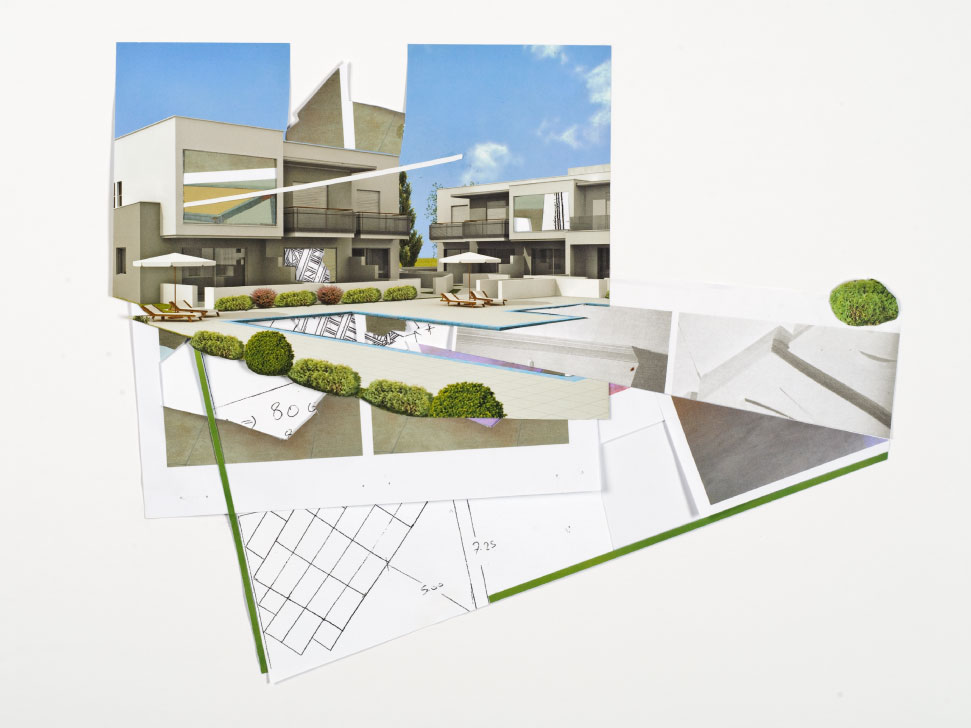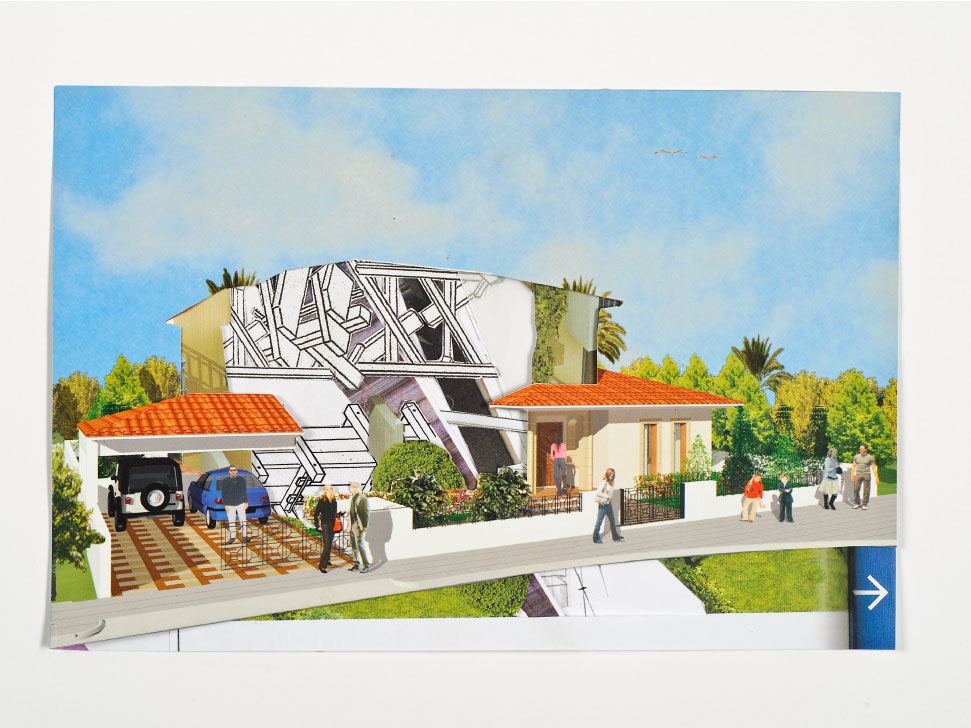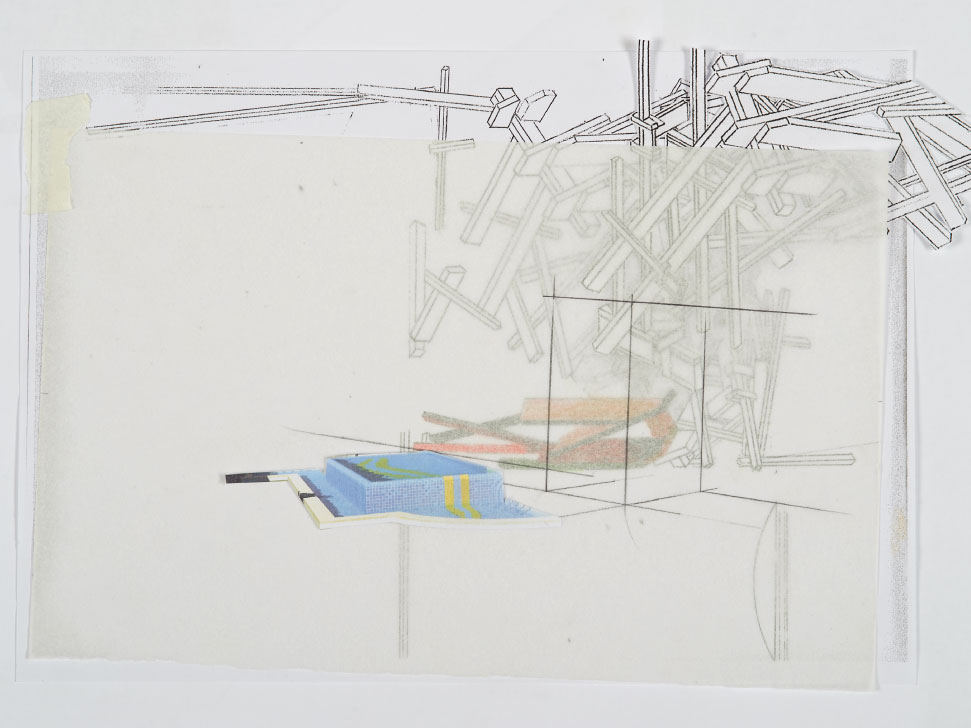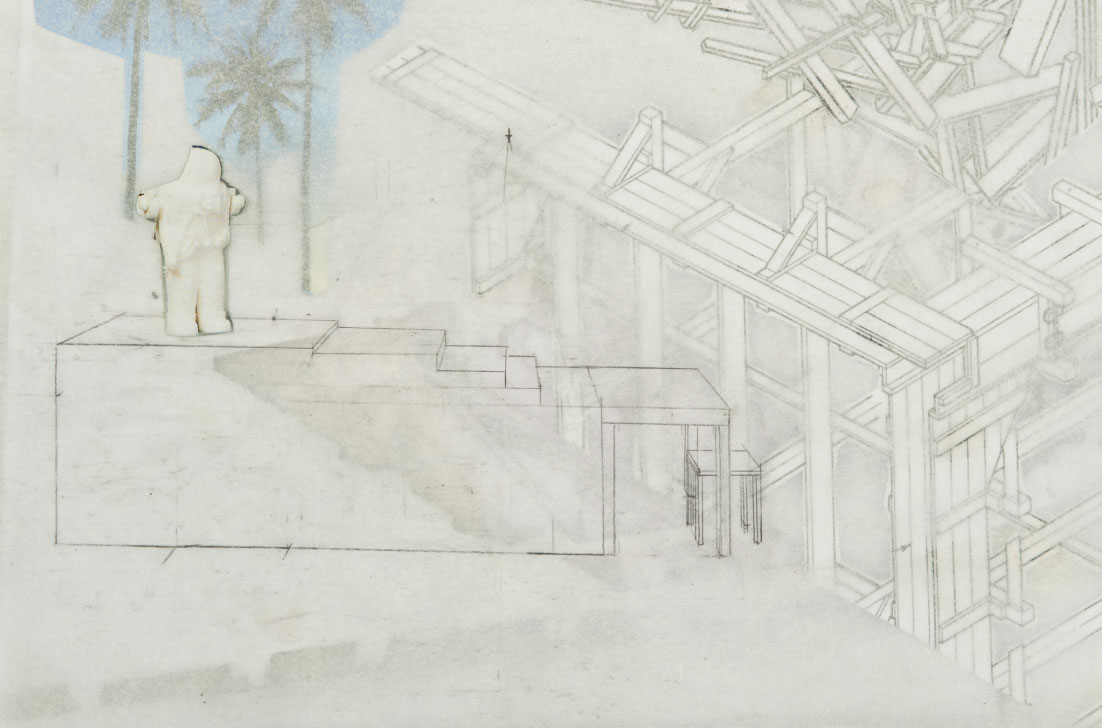Ουρανέ, όχι δεν θα πω το ναι, 2010
Centre of Contemporary Art Diatopos, Nicosia, Cyprus
At your own expense, buy a dream, watch it ‘mature’, ‘degenerate’, ‘collapse’, and ‘reconstruct’ itself. Who sells dreams today? Do we live them? Can we afford our dreams in a time of recession? We dream often, while awake or asleep, and feel immense pleasure by the experience itself. The material activity of dreams seems to work on second levels of interpretation. What if one were to dream of wanting to live in a world where communication, social happiness, and generous gesturing do not emanate from other motives? Does the process of activating this dream shrivel its vision, alienating the dreamer, since even dreams are evaluated by individual achievement? What is in a dream?
Moving ‘through’ Panayiotis Michael’s latest work, Ουρανέ, όχι δεν θα πω το ναι* (Hey Sky, No I Won’t Say Yes), the viewer enjoys the layers of materials and meanings. Panayiotis Michael composes the works using adverts from real estate company catalogues, cutting and cropping them to then edit and reconstruct them in a different setting. Drawings from architectural books are altered, just as our reality is when penetrated by social conventions and symbols. Negotiating the phenomenon of a constructed ‘reality’, product of a society that promises us ‘homes’/dreams, Panayiotis Michael seeks to reveal an aspect of the complex process whereby contemporaryrealities are created.
The private and the personal merge in a space, both inside and out, verging on the in-between. If a ‘house’ is also a space to inhabit one’s body, it is also the same place from which one must escape to re-create one’s daydreams of new possibilities, and even one’s notion of the ‘self’. Being inside and out a body, a ‘home’, a society is to stand on a fertile ground, shifting ideals, transforming beliefs and regenerating dreams. Can this ‘home’ be inhabited? Is the ‘home’ a dream which can be re-imagined? A dream, one might say, which can help us dream better. Felix Gonzales-Torres has voiced how ‘theory [dreams] should make us live better by trying to show us certain ways of constructing reality’. To dream of social happiness and a flourishing generosity is to pave the way for a new reality.
Panayiotis Michael’s project is a shifter of space, images, time, illusions, memories and fears. It places notions of ‘security’ and ‘rivalry’, ‘daydream’ and ‘reality’, the ‘personal and the global’, ‘invention/destruction’ in in-between stages. Just as the cut-outs move around in the drawing, pushing the ‘frame’ from its limits, Stand-Home-Stand, a video animation on a loop, stretches our expectations of what a ‘house’ encompasses. Hypnotic in its glossy enter-ings and levelling exits, this imagined ‘house’ hardly prevails, suggesting that we re-invent the contents of happiness.
As Amerigo Nutolo has observed, ‘Panayiotis Michael’s social and political vision permeates his style perfectly. Trapped inside itself, it is totally uninhabitable. His house becomes an empty emblem in expectation of some sign of private life, of hospitality and of the constant attempt to extend the space’.
* The title is borrowed from a very popular Greek song of the 80’s, whose lyrics were written by Nicos Gatsos, and music by Manos Hatzidakis.
Maria Petrides
